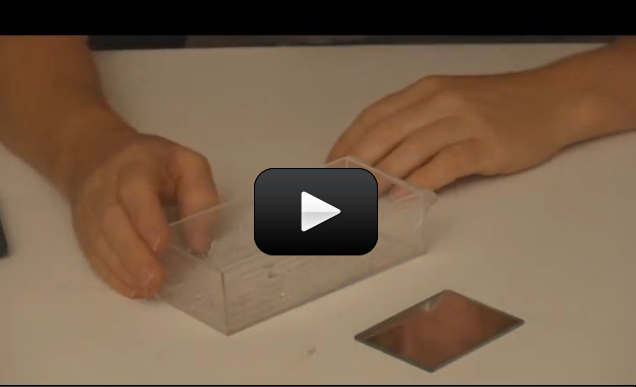In this experiment, water is our prism. A prism un-mixes light back into its original colors of red, green, and blue. You can make prisms out of glass, plastic, water, oil, or anything else you can think of that allows light to zip through.
What’s a prism? Think of a beam of light. It zooms fast on a straight path, until it hits something (like a water drop). As the light goes through the water drop, it changes speed (refraction). The speed change depends on the angle that the light hits the water, and what the drop is made of. (If it was a drop of mineral oil, the light would slow down a bit more.) Okay, so when white light passes through a prism (or water drop), changes speed, and turns colors. So why do we see a rainbow, not just one color coming out the other side?
Please login or register to read the rest of this content.


A CD will separate colors all on its own, so it won’t work for this experiment. It is best to use a mirror.
can you use an old CD instead of a mirror? pretty sure it does the same thing……..
A substance is considered transparent when its molecular structure neither absorbs or reflects light. The H20 molecules in water neither reflect or absorb visible light, so it is transparent to visible light. However, the surface structure of water does reflect some light.
Hi! Why some things look transparent? What is the deal with them?
Light passing from air to glass is like a pair of tires passing from cement into sand. As the left wheel hits the sand it slows down while the right tire on the cement keeps going fast. This turns the axial (see red lines). This is like the wave front of the light as it passes into the glass; it refracts to the normal. The reverse happens when the tire hit the cement (or light hits the air) again.
Why does light bend when it hits the water? I still don’t get it.